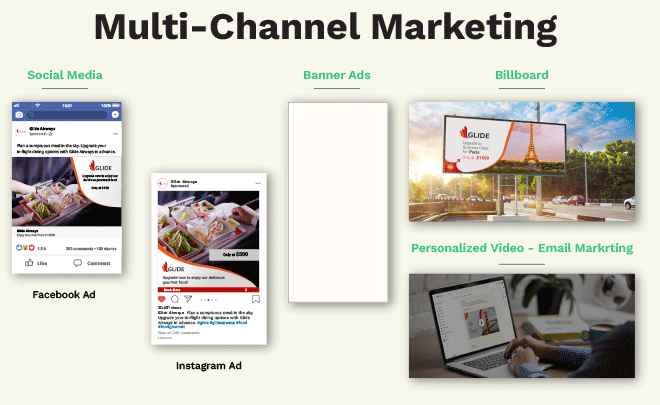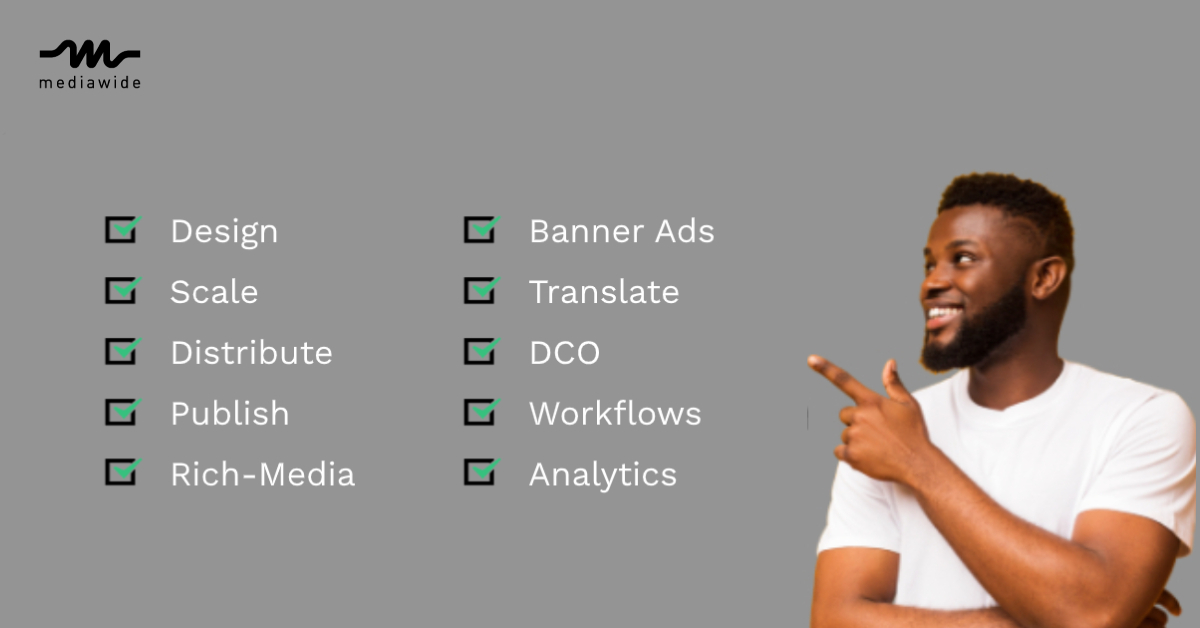“Do you design for brands, or for people interacting with those brands?” When we ask this question to hundreds of tech savvy marketers at agencies many heads nod indicating they’re all about people.
And then, we pop the next question.
“Creativity is your advertising agency’s most valuable asset, how much time does your team spend ‘’actually’’ creating smart, original and out-of-the-box designs?That’s when we hear some honest and other not so honest answers.
In a high-pressure, client focused, chaotic agency environment, it is only natural for designers be challenged vs. creative, be in meetings vs. making content. Marketing agencies of different structures and sizes have content-tech stacks with many parts: marketing automation, analytics, content management systems, digital asset management, and so on.
Very few visionary, smart, and globally catering agencies have the awareness and understanding to fit in a Creative Management Platform (CMP) in this stack, and provide the supportive designing tools required for planning and executing their client’s marketing campaigns. A CMP that is designed with intelligent features, keeping in mind the agency’s business model, workflows, and client demands will be able to streamline their services and simplify sales.
Since there are only 24 hours in a day and just one of you, we’ve created a 10-point checklist to help you choose the right Creative Management Platform for your marketing agency:
- Design
- Scale
- Distribute
- Publish
- Rich-Media
- Banner Ads
- Translate
- DCO
- Workflows
- Analytics
Here is a 10-point checklist to help you choose the right Creative Management Platform for your marketing agency:
- Design
Look for the ability to build impactful, on-point, brand compliant designs that help you win attention, and ensure consistency with the brand is still alive. Think of all of your clients and each of their multi-channel campaigns. Factor in the different formats, shapes and sizes. A CMP designed with an agency in mind will give its designers the ability to create templatized creatives that can be re-purposed across media, platforms and devices. Do it over and over again for all their clients removing the redundancy in the process so designers can be freed up to do what they do best – design! - Scale
A well-designed CMP works on a one-to-many framework: create once and use many times. This way you don’t need to manually create multiple variations of the same advertisement. Create only one template that can be re-sized, re-adjusted and re-published in volume, allowing your clients to run marketing campaigns at scale. A great example of this would be the ability to create and distribute via email, personalized videos to tens of thousands of new customers, being onboarded by a personal wealth management company, each of these carrying the customer’s first name, their initial investment numbers and ROI figures in the form of a video. - Distribute
 Running a killer multi-channel campaign for your client could be a nightmare. There is email marketing, display advertising, social media, digital signage, print ads, newspaper inserts and so on. A multichannel marketing campaign is one that combines a variety of online, offline, direct and indirect marketing channels to communicate with customers. Hence, when selecting a CMP choose one that can handle the distribution in desired formats, sizes, and layouts for each of the channels included in the campaign of your clients. Look for pre-existing integrations with popular platforms like Oracle Eloqua, Adobe Marketing Cloud, MailChimp or HubSpot from where the creative template can refer to data for adaptation, localization and personalization.
Running a killer multi-channel campaign for your client could be a nightmare. There is email marketing, display advertising, social media, digital signage, print ads, newspaper inserts and so on. A multichannel marketing campaign is one that combines a variety of online, offline, direct and indirect marketing channels to communicate with customers. Hence, when selecting a CMP choose one that can handle the distribution in desired formats, sizes, and layouts for each of the channels included in the campaign of your clients. Look for pre-existing integrations with popular platforms like Oracle Eloqua, Adobe Marketing Cloud, MailChimp or HubSpot from where the creative template can refer to data for adaptation, localization and personalization. - Publish
Look for features that allow you to publish directly to any ad-network, with optimized clickTag insertion for tracking purposes. Also, since the client may want to be involved in the process for reviewing and approving creatives before they’re sent out, it’s important to have functionalities that support campaign scheduling, and update banners in real-time, without the need to re-publish. Platforms with APIs will let you add the desired tailored functionality and integrations. Bonus points if the platform offers ease of publishing to Google Display Network (GDN), your own e-Commerce site built on Magento, or any other Demand Side Platform (DSP) of the client’s choice. - Rich-Media
The CMP should be able to generate some of the most widely identified rich media formats like overlay, screenings, pushdown ads, interstitial creatives and anchor ad units. Look to see if the CMP is able to provide automatic fall-back options. Rich-media also includes video and audio, and in today’s era of YouTube and Netflix these are equally important. The tangible advantage of rich-media ads is they can be made interactive by adding clickable CTA buttons leading to offers and landing pages. So, as an agency. if you’re keen to drive value for your client’s bucks you want to get the rich-media ads figured out. - Banner Ads
In the space of digital and programmatic advertising, banner ads are becoming more and more significant. In order to fuel your client’s highly targeted programmatic campaigns you will need a CMP that allows you to create and distribute banner ads that support the campaign goals. A CMP that is integrated with a Digital Asset Management solution is even better because then it can refer to, and pick the various customized assets required to make the programmatic campaign personalized and successful. -
Translate
 If your client is multi-national, multi-regional and/or global you can provide enhanced value to them by offering print, web and video creatives translated in local languages. A CMP that allows translation, adaptation and localization of ads will be the most suited choice for an agency catering to large multi-national organizations.
If your client is multi-national, multi-regional and/or global you can provide enhanced value to them by offering print, web and video creatives translated in local languages. A CMP that allows translation, adaptation and localization of ads will be the most suited choice for an agency catering to large multi-national organizations. - DCO
A CMP takes a holistic approach towards Dynamic Creative Optimization. A DCO compatible CMP will allow campaign managers and account executives of an agency to produce an array of ads simultaneously but also dive deep to make specific changes into each individual creative. The technology allows agencies and marketers to introduce new variations of a creative over time. It gives them space and flexibility to experiment, test, and keep the brand top-of-mind with the target audience. In addition, it is a great strategy for large-scale localization. - Workflows
A CMP designed for marketing agencies will come with in-built workflow management tools for review, commenting and approvals management. This helps teams across clients and geographies to collaborate efficiently and be more productive offering everyone the desired visibility into the process. - Analytics
It goes without saying that data analytics is a key component of any given platform these days. Every organization looks for the ability to measure, learn, and improve. A CMP should also provide analytics to help agencies and their clients determine what is working and what isn’t.
Have we missed anything? Do you think a CMP needs anything beyond what we have listed above? Let us know if it does. Because at Mediawide, we have created a CMP that fits the advertising and marketing agency business model with the support of our clients from North America, Europe and Australia/NZ. And, we’re always looking to learn and continuously keep improving our platform to meet the market needs.
Let us know if you’re interested in a demo to learn more and we’ll be happy to arrange it for you!


